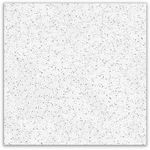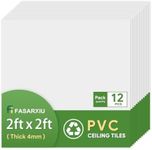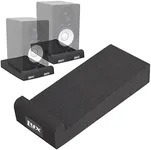Buying Guide for the Best Ceiling Tile For Drop Ceiling
Choosing the right ceiling tile for a drop ceiling can significantly impact the aesthetics, acoustics, and functionality of a room. Drop ceilings, also known as suspended ceilings, are popular in both residential and commercial spaces due to their versatility and ease of installation. When selecting ceiling tiles, it's important to consider various factors such as material, size, acoustic properties, and design to ensure you get the best fit for your needs.MaterialCeiling tiles come in various materials such as mineral fiber, fiberglass, metal, and PVC. The material affects the tile's durability, acoustic properties, and appearance. Mineral fiber tiles are common and offer good sound absorption, making them ideal for offices and classrooms. Fiberglass tiles are lightweight and provide excellent sound insulation, suitable for areas where noise reduction is crucial. Metal tiles are durable and give a modern look, perfect for industrial or contemporary spaces. PVC tiles are moisture-resistant and easy to clean, making them ideal for kitchens and bathrooms. Choose the material based on the specific needs of the room where the tiles will be installed.
SizeCeiling tiles typically come in standard sizes such as 2x2 feet or 2x4 feet. The size you choose will depend on the grid system of your drop ceiling and the overall look you want to achieve. Smaller tiles (2x2 feet) can create a more uniform and grid-like appearance, while larger tiles (2x4 feet) can make a space feel more open and less cluttered. Consider the dimensions of your room and the existing grid system when selecting the tile size to ensure a proper fit and aesthetic appeal.
Acoustic PropertiesAcoustic properties refer to the tile's ability to absorb and reduce sound. This is important in environments where noise control is essential, such as offices, schools, and hospitals. Tiles with high Noise Reduction Coefficient (NRC) values are better at absorbing sound, making them ideal for noisy areas. Conversely, tiles with lower NRC values are suitable for spaces where sound reflection is desired, such as auditoriums or music rooms. Assess the acoustic needs of your space and choose tiles with appropriate NRC ratings to enhance sound quality and comfort.
Design and TextureThe design and texture of ceiling tiles can greatly influence the overall look of a room. Tiles come in various patterns, colors, and finishes, from plain and smooth to textured and decorative. Smooth tiles offer a clean and modern look, while textured or patterned tiles can add visual interest and character to a space. Consider the existing decor and style of the room when selecting the design and texture of the tiles. For a cohesive look, choose tiles that complement the room's color scheme and design elements.
Fire RatingFire rating indicates the tile's ability to resist fire and prevent its spread. This is a crucial safety feature, especially in commercial buildings and public spaces. Tiles with higher fire ratings provide better protection and are often required by building codes. When selecting ceiling tiles, check the fire rating to ensure they meet the necessary safety standards for your specific application. Prioritize tiles with appropriate fire ratings to enhance the safety of your space.
Moisture and Mold ResistanceMoisture and mold resistance are important considerations for ceiling tiles in areas prone to humidity, such as bathrooms, kitchens, and basements. Tiles with high moisture resistance are less likely to warp, sag, or develop mold, ensuring a longer lifespan and better air quality. Look for tiles specifically designed to resist moisture and mold if you are installing them in damp environments. This will help maintain the integrity and appearance of your ceiling over time.





















